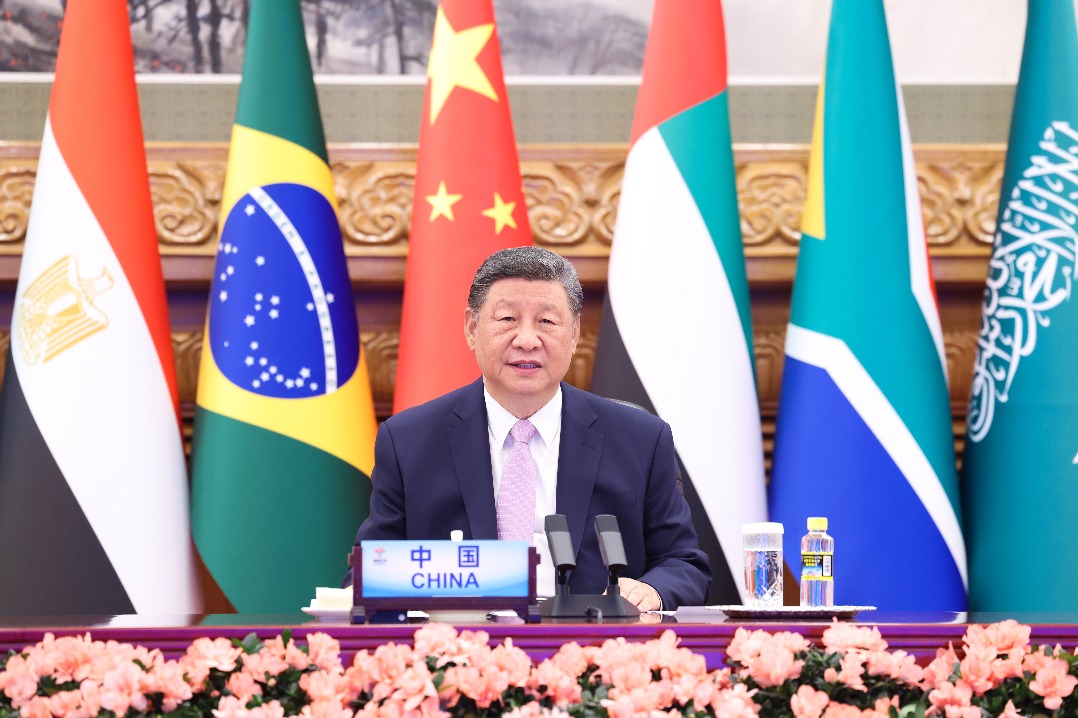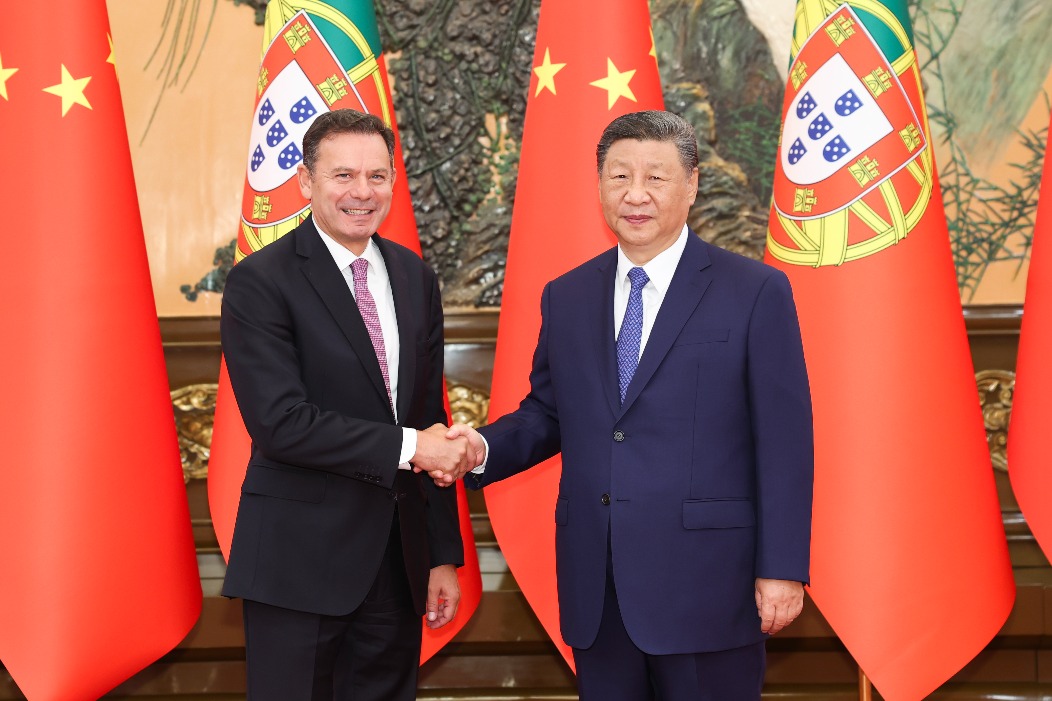Way forward
Projects with ASEAN members demonstrate the BRI is rooted in symbiosis, benefiting both the host country and China alike


The Association of Southeast Asian Nations has never been spared from the challenges posed by global geopolitical dynamics and major power rivalry. Nonetheless, as a regional bloc, ASEAN has not allowed the overlapping territorial claims over some parts of the South China Sea by several claimant states in ASEAN to derail the trade relations with its top trading partner, China.
As a comprehensive strategic partner of ASEAN, China has been the latter's top trading partner since 2009, while the 10-member bloc has been China's top trading partner since 2020.
The ASEAN-China Free Trade Area implemented on Jan 1, 2010, is the cornerstone for their robust economic engagement. Having been incorporated with the provisions of trade in goods, early harvest program, trade in services, investment, dispute settlement mechanism and economic cooperation, the substantial conclusion of the ACFTA 3.0 upgrade negotiations has witnessed the inclusion of consumer protection and competition provisions, alongside a conspicuous shift to the emerging drivers of sustainable development, such as electronic commerce and clean energy.
In the first eight months of 2024, ASEAN-China trade reached $638 billion, marking a year-on-year increase of 10 percent and accounting for 15.7 percent of China's total foreign trade during that period. Prior to that, it posted $975.3 billion in 2022, accounting for nearly one-fourth of ASEAN's global trade, inching closer to the $1 trillion mark, as the bloc continues to integrate itself into the China-centric global value chain. Be that as it may, while embracing the China-initiated Belt and Road Initiative, ASEAN maintains its centrality in addressing its security concerns and development priorities, alongside straddling the delicate geopolitical rivalry between China and the United States. This reminds the world of its consistency in endeavoring to make Southeast Asia a zone of peace, freedom and neutrality (ZOPFAN), as underscored by the ZOPFAN Declaration inked in Kuala Lumpur in 1971.
This was evidenced by the circumspection and astuteness of ASEAN in prioritizing regional economic cooperation and sustainability as two core pillars of the ASEAN Outlook on the "Indo-Pacific".The outlook represents the initial ASEAN response to the US-initiated "Indo-Pacific" strategy designed to encircle China and stymie its rise. Plainly put, ASEAN is pursuing its own course of autonomous strategic partnership without picking sides in the major power face-off in the best interests of its 670 million people.
While bemoaning landlocked topography that leads to remoteness from the source of supplies of materials and marketplace for the finished products for any desired industrialization, the China-Laos Railway is perhaps a relevant example to dismiss such a myth. The railway has transformed Laos, a least-developed economy to a land-linked country with enhanced economic competitiveness.
The 1,035-kilometer railway line, linking Kunming in Southwest China's Yunnan province and the Laotian capital Vientiane, is a flagship Belt and Road project. Being part of the long hatched Pan-Asian Railway system or Kunming-Singapore Railway, it is a "game-changer", reshaping the logistical infrastructure and connectivity landscape across the Southeast Asian peninsula, alongside boosting regional economic growth and facilitating people-to-people engagement in the stakeholder countries.
None of the Belt and Road infrastructure projects around the world, including those in other ASEAN countries, such as the Jakarta-Bandung High Speed Railway and the East Coast Rail Link in Malaysia, have ever been spared from the vilification and disinformation of the BRI detractors. The malicious smears, ranging from the scaremongering of "debt traps" to the "compromised sovereignty" of host countries under debt distress, alongside casting the aspersions as to whom benefits most from the projects, form the template of the West-sponsored cognitive warfare against the BRI.
Having been obsessed with such an agenda, any glitches stalling the project will immediately be trumpeted as a "push-back" by the host country from the West's perspective. In this context, the East Coast Rail Link which was once stalled by the change of railway configuration is a clear case in point.
Similarly, any domestic political discord within the host country of a Belt and Road project will, without fail, provide an ideal rift for the West to try and drive a wedge against the mega endeavor.
Yet, the collective endorsement of the BRI by over 150 nations and more than 30 international agencies was never spurred by sheer herd mentality. Instead, it is anchored in the common quest for development needs, albeit of diverse priorities.
Amid the intense demonizing of the BRI, perhaps a comprehensive and comprehensible set of narratives is necessary to keep the BRI discourse framed within the right perspective. The endeavor is not akin to the Marshall Plan spearheaded by the US in the post-World War II Western Europe as it has never had any attached conditionalities.
In this context, the incorporation of modalities of project finance and implementation will certainly help preempt any unnecessary misgivings of potential host countries. This is absolutely necessary as more Chinese companies, both State-owned enterprises and private enterprises alike, are now venturing into the Belt and Road countries in their quest for projects abroad. After all, not all projects undertaken by Chinese contractors beyond their shores are BRI-related.
Knowing that the modus operandi of the BRI is rooted in symbiosis, benefiting both the host country and China alike, the former should have the latitude of tolerance to accommodate any possible reaping of geopolitical dividends by China.
This may come as a collateral dividend to China in the case of the BRI as the geopolitical influence accrued from it is intangible. In contrast, under the framework of other rival infrastructure endeavors such as the Partnership for Global Infrastructure and Investment spearheaded by the US-led G7 and the Global Gateway by the European Union, it is the investors' share of profit that must be factored-in as a prerequisite.
From the perspective of potential BRI partner countries, time has never been on the side favoring small nation states as they have fewer tools to leverage. The best bet still lies in jumping on the viable bandwagon of pursuing common prosperity through economic integration and cooperation. This should be underpinned by the ideal of fostering a community of shared future where the least-developed economies are given an equal place as equitable stakeholders.

The author is president of the Belt and Road Initiative Caucus for Asia Pacific. The author contributed this article to China Watch, a think tank powered by China Daily. The views do not necessarily reflect those of China Daily.
Contact the editor at editor@chinawatch.cn.

































